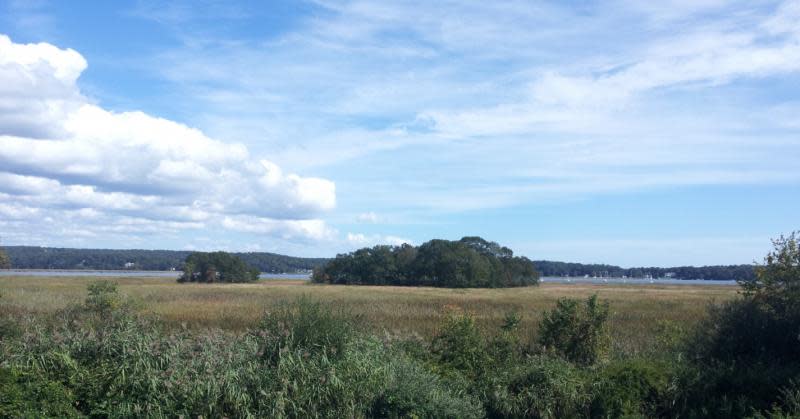
Connecticut River Estuary
Categories
New England (CT, MA, ME, NH, RI, VT)
About
GENERAL INFORMATION
Criteria:
- Currently a Ramsar Site
- Listed on more than one “valuable wetland” list by natural resource agencies or nongovernment organizations.
- Protects biological diverse wetland flora, fauna and/or their habitat
- Supports significant numbers of wetland-dependent fauna, such as water birds or fish
- Rare or unique wetland type within its own biogeographical region. (Meeting this criteria would include, but is not limited to, wetlands with unique hydrology or chemistry that make it rare within its own region)
The lower Connecticut River from Middletown to Old Saybrook is a tidally influenced riverine lower perennial watercourse that bisects a landscape of relatively low density in the otherwise densely developed Northeast. It is the only major river system on the Atlantic coast without a major port or urban center at its estuary. This long tidal river (the translation of its native American name) has reaches that contain biologically unique, diverse, productive, and ecologically sensitive natural communities. It serves to link the land and sea as a migratory corridor for various birdlife, diadromous fish, and various mammals. It is culturally sugnificant with a number of prehistoric, precolonial, and colonial sites recognized along its shores and within the adjacent watershed. It is host to a number of tourist destinations, state parks and natural areas, lies within the Silvio Conte National Widllife Refuge, and contains a number of culturally and historically significant resources along its shores. The freshwater and brackish water tidal wetlands are exemplary communities in the region. These communities,, and the tributary streams, shorelines, and open water areas associated with the river support a plethora of state and federal species of conservation concern including species listed on both the CT and Federal Endangered Species Acts.
Exemplary Ecosystem Services:
- Maintains ecological connectivity/cohesion
- Aesthetic/cultural heritage value/ provisioning
- Recreation (birdwatching, ecotourism)
- Aquifer recharge
- Storm abatement
- Carbon storage
- Water quality improvement
- Education
CONSERVATION STATUS AND THREATS
Conservation status: RAMSAR Designation
Adjacent Land Use: Rural Residential (non-farm)
Approximate natural buffer width:
- 50-100 ft
Other: Within the Silvio Conte NWR conservation focal area. Various CT WMAs, Parks and NGO Preserves occur
ECOLOGY
Approximate size: 8,325
General wetland characterization:
- Inland Shallow Fresh Marsh
- Inland Open Fresh Water
- Inland Fresh Shrub Swamp
- Inland Fresh Wooded Swamp
- Coastal Salt Meadow
- Coastal Regularly Flooded Salt Marsh
Adjacent Water Bod(ies):
- Stream
- Tidal Systems
Name of body of water: Long Island Sound, Salmon River, Eight Mile River National Scenic River
Surficial Geology:
Soils consist of glacial tills on higher topographic elevations (uplands of the adjacent steep sided river valley) to stratified sand, gravel and silt at the lower portions of the topsequence, and extensive areas of Westbrook Mucky Peat within the brackish marshes of the estuary.
If Adjacent to Stream, stream order: from 1st order to multiple order tributaries
Soils:
Soils consist of glacial tills on higher topographic elevations (uplands of the adjacent steep sided river valley) to stratified sand, gravel and silt at the lower portions of the topsequence, and extensive areas of Westbrook Mucky Peat within the brackish marshes of the estuary.
FLORA AND FAUNA
Dominant flora: American Beachgrass (Griswold Point); Common Reed (Great Island, Ragged Rock Creek, and many other locations); Smooth Cordgrass (Ayers Marsh Old Saybrook, Great Island WMA, Old Lyme); Common Threesquare (Schoenoplectus pungens) and Arrowhead (Sagittaria spp.) (Selden Island Natural Area Preserve in Lyme); Annual Wild Rice (Zizania aquatica) Whalebone Creek Preserve Lyme); Narrowleaf Cattail - Rosemallow (Typha angustifolia - Hibiscus moscheutos) - Lords Cove in Lyme
Unique flora: Wild Rice, Lilaeopsis chinensis, Golden Club
Dominant fauna: Black Duck (Breeding resident and numerically dominant winter resident waterfowl), Tree Swallow (numerically dominant migratory songbird during staging for southbound migration)
Rare fauna: American Bittern, Least Bittern, Peregrine Falcon, Bald Eagle, Golden Eagle, Northern Harrier, Great Egret, Snowy Egret, Red Knot, King Rail, Common Moorhen, Saltmarsh Sparrow, American Eel
ADDITIONAL INFORMATION:
IPAC resources report - Lower CT River
Images

